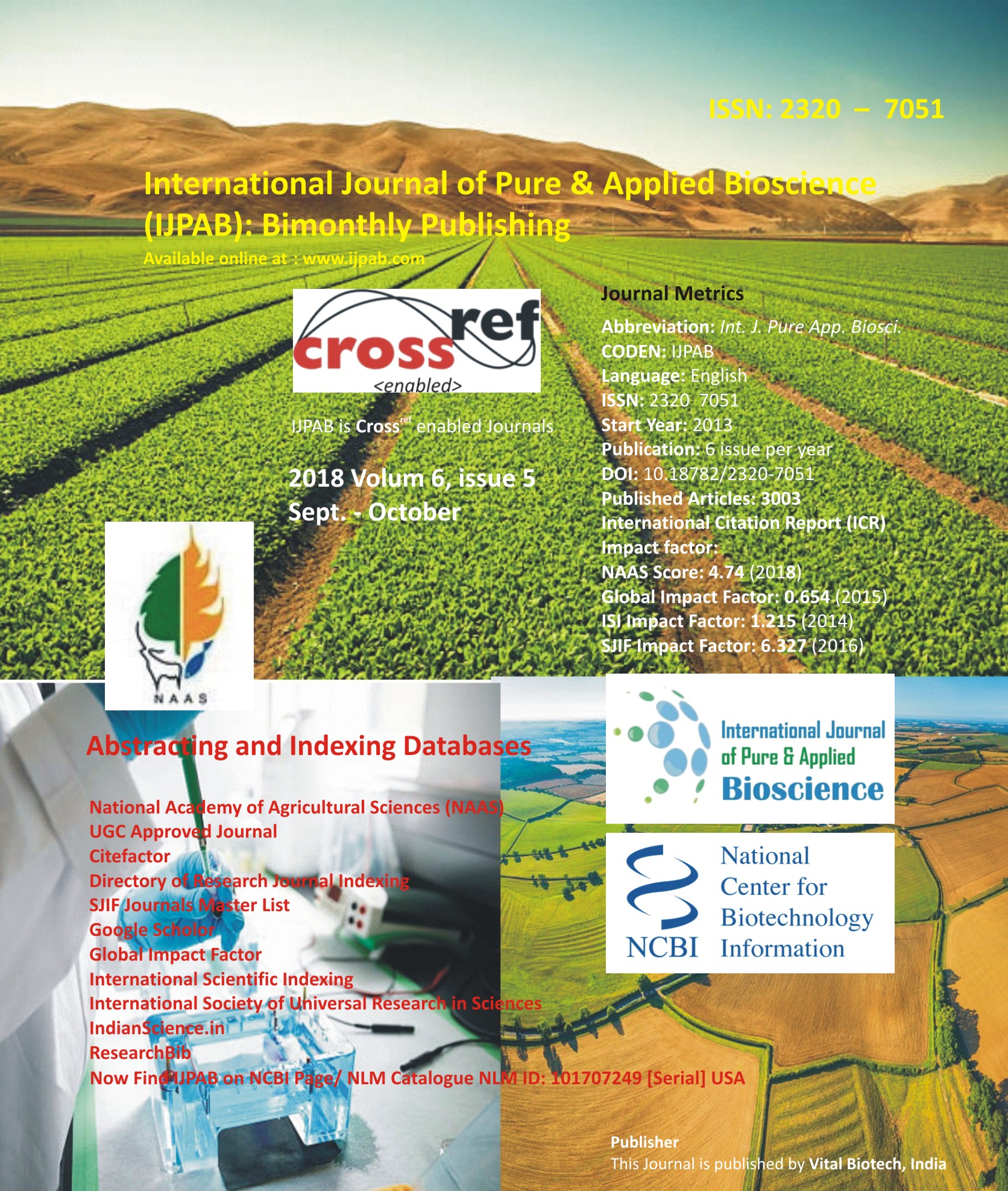
-
No. 772, Basant Vihar, Kota
Rajasthan-324009 India
-
Call Us On
+91 9784677044
-
Mail Us @
editor@ijpab.com
International Journal of Pure & Applied Bioscience (IJPAB)
Year : 2018, Volume : 6, Issue : 5
First page : (573) Last page : (583)
Article doi: : http://dx.doi.org/10.18782/2320-6898
Mapping Groundwater Potential Zones in Meja Block, Allahabad District Using Remote Sensing and GIS Techniques
Vivek Tiwari1*, Sarika Suman1, H. K. Pandey2, and Deepak Lal3
1Banaras Hindu University, Varanasi
2Department of Civil Engineering, MNNIT Allahabad
3Shepherd Institute of Engineering, SHUATS, Allahabad
*Corresponding Author E-mail: viveektiwary@gmail.com
Received: 21.08.2018 | Revised: 19.09.2018 | Accepted: 26.09.2018
ABSTRACT
Remote Sensing (RS) and Geographic Information System (GIS) has become one of the leading tool for managing water resources. It allows manipulation and analysis of individual thematic layer of spatial data. It is used for analyzing and modelling the interrelationship between the layers. This article mainly deals with the integrated approach of RS and GIS techniques to delineate groundwater potential zones in a sedimentary area of Meja block of Allahabad District. The satellite image (LANDSAT-VIII, February 2016) and DEM have been used for the preparation of groundwater prospective map by integrating drainage-density, landuse, geomorphology, and groundwater level contour maps. The results revealed that about 32.21% of the area have excellent groundwater potential, 25.62% as good groundwater potential zone, 20.41% have moderate groundwater potential, 12.92% area comes under poor potential zone and only 8.85% area have very poor groundwater potential. Assessment of the groundwater potential map showed that the distribution is more or less a reflection of drainage density, geomorphology, depth to water level contours, land use maps and in addition is well correlated with the bore well yield data. The groundwater prospective map could be helpful in better planning and management of groundwater resources especially in the hard rock area.
Key words: Remote Sensing, GIS, Groundwater prospect map, Sedimentary area, Allahabad district, IndiaFull Text : PDF; Journal doi : http://dx.doi.org/10.18782
Cite this article: Tiwari, V., Suman, S., Pandey, H.K. and Lal, D., Mapping Groundwater Potential Zones in Meja Block, Allahabad District Using Remote Sensing and GIS Techniques, Int. J. Pure App. Biosci.6(5): 573-583 (2018). doi: http://dx.doi.org/10.18782/2320-7051.6898

